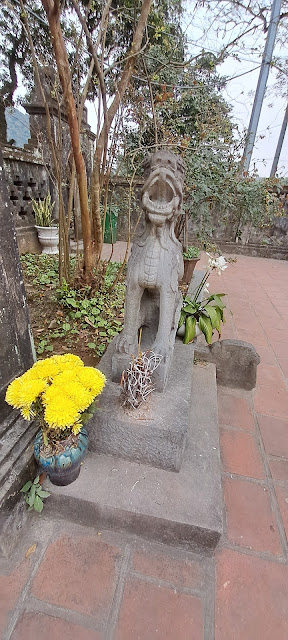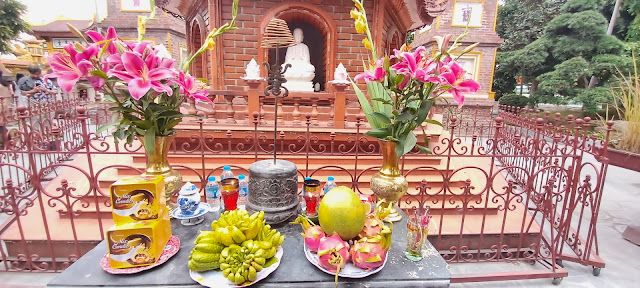Vietnam - Things to know
Currency in Vietnam -
The currency of Vietnam is the Vietnamese Dong (VND). Some places they do accept USD. Vietnamese Dong (VND) is very devaluated against US Dollar (USD). It starts with 5.00VND 1,000, 2,000, 5,000, 10,000, 20,000, 50,000, 100,000, 200,000 and highest 500,000 Vietnamese dongs note. Don't confuse between 20.000VND and 500.000VND even though they look the same.
Photo Courtesy - https://www.vietnamonline.com/az/bank-notes.html
While going from India, we converted INR into USD and carried them as converting USD to VND is easy, can be done in any bank, Jewellery shop, travel company offices or in the hotel you stay in.
Credit Cards and ATMs
We carried VISA and AMEX cards. You won’t have a problem finding ATMs. Most ATMs accept Visa cards, but you might struggle to find one that accepts Cirrus and Maestro cards.
Language:
The official language in Vietnam is Vietnamese, along with it many local/tribal languages are spoken there. Ask for English speaking guide for your travel. We didn't face much trouble with the language.
Electrical input/output pluggings -
The plugs in Vietnam are types A, C, and F. The standard voltage is 220 V, and the standard frequency is 50Hz. We didn't buy universal adapters and ok with the cell phone chargers from India working pretty well.
Traffic and Roads in Vietnam -
Vietnam has all four wheelers with left hand drive and traffic flows exactly opposite to India's right hand drive traffic. This has to be kept in mind every time you are walking/ crossing the roads.
Four wheeler have hefty taxes almost 40% so two wheelers are very common. Our guide told us there are majority of 2 wheelers from Honda, Suzuki, Vespa. Each house has 3 to 4 two wheelers, most of them scooterettes with Petrol or electrical and lesser bikes.
There is a flood of two wheelers and four wheelers on the roads/highways and everywhere you go. There is no discipline to them, unless and until they sight a Policeman.
Crossing the road is an adventure. Nobody is going to stop, you just get used to picking your time and weaving between moving vehicles.
Don’t hire scooters unless you have a suitable international motorbike license and adequate travel insurance.
Diversity and inclusion in Vietnam -
With Border countries like Cambodia, China, Laos, Vietnam has cultural and ethnic diversity. Even within Vietnam, they have more that 54 ethnic groups, Each of them has its own language, lifestyle, and cultural heritage. Many of the local ethnic groups residing in mountain areas are known collectively in the West as Montagnard or Degar.
The largest ethnic groups are: Kinh (Viet) 85.7%, Tay 1.9%, Tai Ethnic 1.8%, Mường 1.5%, Khmer Krom 1.5%, Hmong 1.2%, Nung 1.1%, Hoa 1%, with all others comprising the remaining 4.3% (2009 census). Family is very strong in Vietnam. Family and clan (dòng họ) are valued over individualism.
Close proximity and rulers from China, Culture of Vietnam originated from ancient Nam Viet, an ancient kingdom of Giao Chi people which shared characteristics of Han Chinese cultures and the ancient Dong Son Culture. Being ruled by French, impact of America, Vietnam has continuously absorbed various influences from Asian, European, and American cultures.
There is only one political party in Vietnam,the Communist Party of Vietnam (CPV). leaders are elected from the same party and legally allowed to hold effective power.
Gender diversity in Vietnam -
The Constitution of 1946 states that women and men are equal. We saw many female working at Petrol stations, taxi drivers, two wheeler drivers, super stores, security and police as well as a travel guides.
Vietnamese Cuisine -
Vietnamese food is fresh and healthy. It exhibits great diversity but can be classified into three primary categories by locations: the north, south, and central regions of the country. Many types of noodles and noodle soups and all type of spring rolls are popular here. Less use of oil and greater use of fresh vegetables is preferred. Soy sauce, fish sauce, mint, and basil are popular ingredients. Rice is the main food and eaten in 3 meals a day. The flavors of Vietnamese food range from spicy and sour to sweet with with beef, chicken, fish, sea food as main food. It is either boiled or roasted. No FRYING, Giving Indian Tadka, Addition of spices was seen... We had to tell to add salt as well 😀
Me being Pure Vegeterian, was content with frsh fruits like watermalon, pineapple, banana, sweet poato, Juices,Carrot, cucumber, French fries and Plain rice or bread butter. We had carried theplas, laddus and many dry snack items with us and those were the saviors. Even the non veg eaters like my husband and daughter didn't adjust to the Veitanamese taste.
We did find some Indian/Paki restaurants to have dinner in Hanoi.
Religion and philosophy of Vietnam -
Religion in Vietnam has historically been largely defined by a mix of Buddhism, Confucianism, and Taoism, known in Vietnamese as the Tam Giao (“triple religion”).Catholicism is also practiced in modern Vietnam. Ancestor worship is common in Vietnamese culture like Hinduism. They keep fruits, cookies, Milk shake, Juices, Inscense sticks assuming the soul still be treated like Naivedya or Prasadam in Hinduism.











👍
ReplyDelete